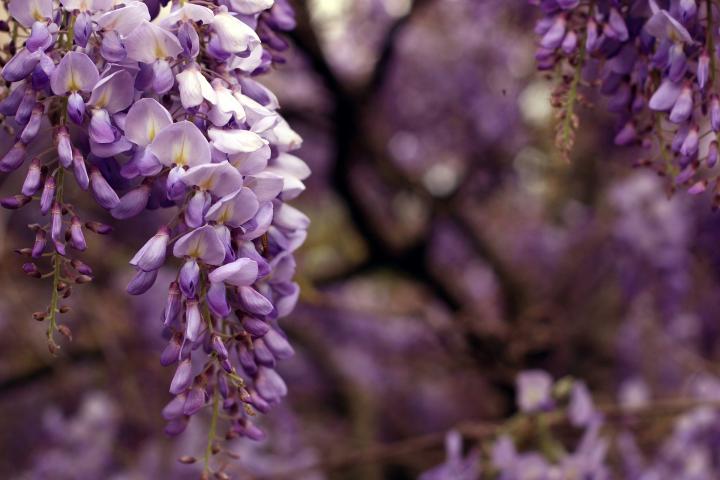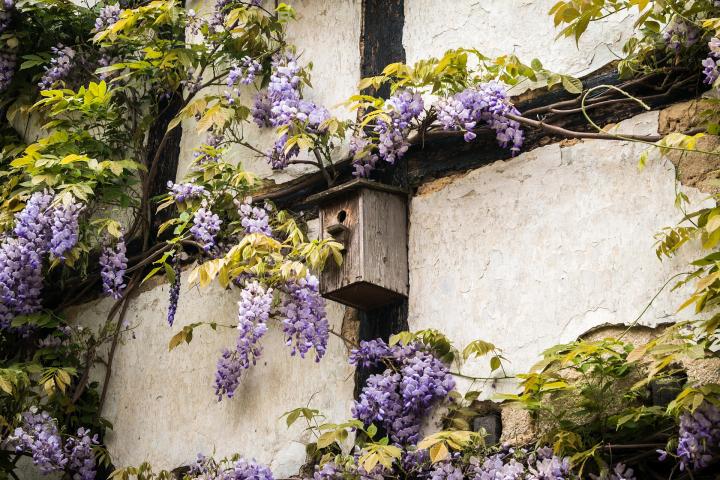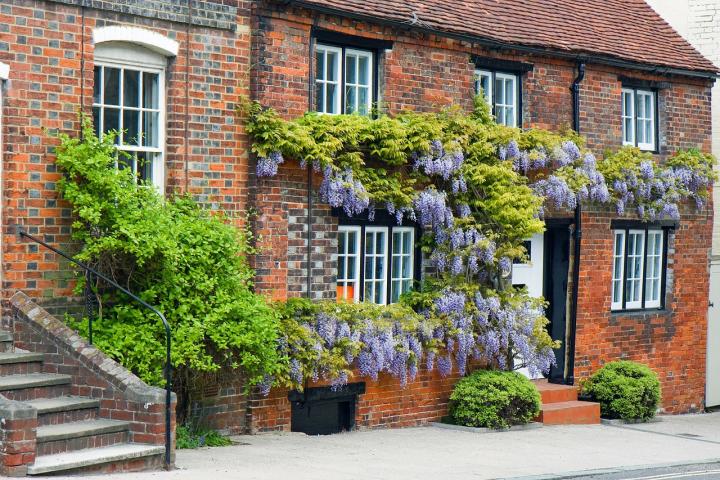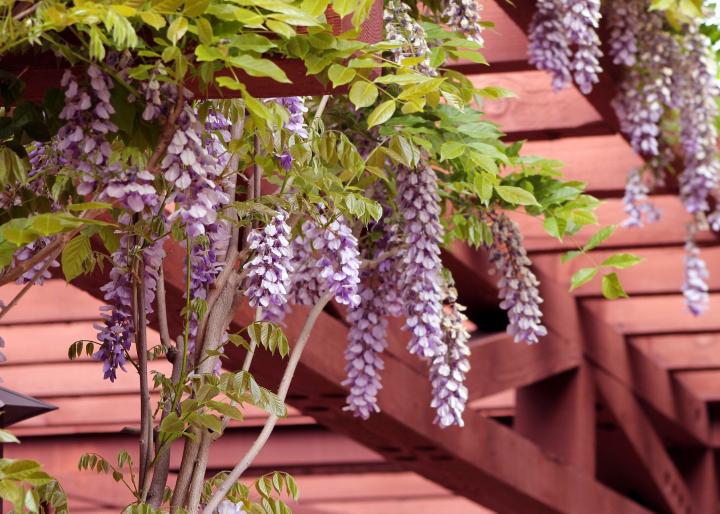
Photo Credit
Pixabay
Subhead
Planting, Growing, and Pruning Wisteria
Read Next
Types
Native Wisteria
If you are located in North America, consider planting a species of wisteria native to the continent, such as:
- American wisteria (W. frutescens) grows in Zones 5 to 9. It’s native to a range of states covering Virginia to Texas, southeast to Florida and north up through New York, Iowa, and Michigan. The vine grows 25 to 30 feet long with shiny dark-green leaves and large, drooping lilac or purple-blue flower clusters, which appear after the plant has leafed out. The blooms will only appear on new wood. However, note that the flowers tend to be more lightly fragrant than the Asian wisterias’ flowers.
- Kentucky wisteria (W. macrostachya) grows in Zones 4 to 9. This late-season bloomer is native to the southeastern U.S. and is similar to American wisteria (it is sometimes considered a variety or subspecies of American wisteria). Kentucky wisteria bears mildly fragrant bluish-purple flowers after growing only 2 to 3 years, making it the quickest wisteria to bloom.
- ‘Blue Moon’ is an extra-hardy cultivar of native Kentucky wisteria, with showy silvery-blue clusters. It blooms in late spring or early summer. It’s cold hardy to –30°F.
Non-Native Wisteria
- Chinese wisteria (W. sinensis) and Japanese wisteria (W. floribunda) are non-native, invasive species, so we do not recommend them for North American gardens, despite the fact that they are regularly sold at nurseries and garden centers. They are hardy in Zones 5 to 9 and are capable of growing 30 to 60 feet in length (and beyond in the Southern U.S.). Two common varieties of Japanese wisteria include:
- ‘Honbeni’ (syn. ‘Honko’): popular, bears clusters of pink flowers in late spring
- ‘Alba’ (syn. ‘Shiro Noda’): bears lovely clusters of pure-white flowers in late spring

Gardening Products
More Like This
We purchased a home last year that has two, rather old-looking and very long wisteria plants. I need to relocate them since they’re growing up our house and into our attic vent. What’s the best time of year and way to do this?
Wisteria has been on our property since we moved here in 1986, I have tried repeatedly to eradicate it with no success. I have cut it back often and dug up roots. I have tried multiple herbicides in past years, with minimal success. This year I tried a different weed killer Eliminator Total Weed Killer by Go Tech, Inc., which is sold in Big Box Stores) and it seems to be working, time will tell. Do not plant wisteria, or bamboo and your gardening life will be better!
Don't plant it!!! Kills young trees by strangling them. You can't kill it! Sure it's beautiful for about 2 weeks out the year but the damage they do isn't worth it. The roots will span out causing it to spread to places you don't want it. Destroyed an above ground pool before we were able to kill it. We dug up a root that was 40' long and the size of your leg! Maybe they have genetically re-engineered to not be as aggressive but I'm not taking the chance.
Wisteria will strangle any tree that is not fully mature as it wraps around it.
Is wisteria a parasite eventually killing that which it grows on. Here in the south I have enjoyed its lovely displays of clustered blooms trailing downward from 20 and 30 foot tall trees and wondered is this healthy for the tree.
my wisteria was well established and flowered beautifully last year. However my apt complex decided to build a new fence and cut my wisteria down, It is now coming back with new growth and tendrils are growing vigorously. What kind of trellis should I use?
Will an iron deck railing support a plant, planted in a whiskey barrel on a second level?
Will the plant be bothered by deer and squirrels?
Mine in NC if kept cut back will support it self . My first thought was There fence LOL
- « Previous
- 1
- 2
- …
- 10
- Next »













Comments